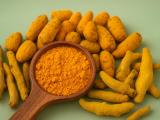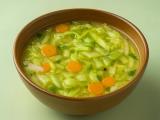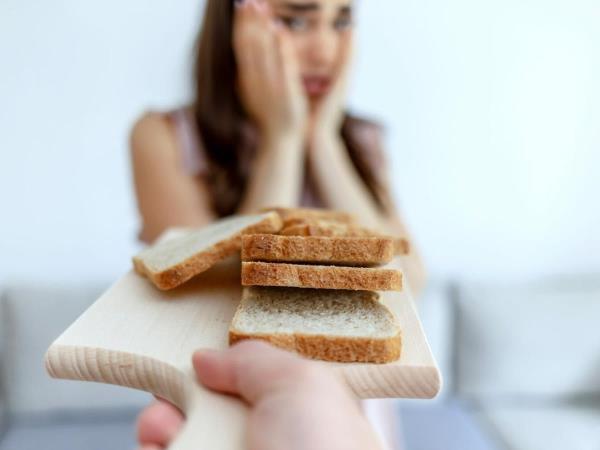In recent years, gluten has been talked about almost as often as sugar. But while sugar is still found everywhere, gluten has become almost public enemy number 1. Amid all this noise, the fundamental question is often forgotten: how much gluten is actually safe to consume before it damages health?
What exactly is gluten
Gluten is a protein found in wheat, barley, and rye. Those of you who bake bread at home have felt it. It's that sticky feeling between your fingers that gives the dough elasticity. Because of gluten, bread rises nicely, and pizza isn't like cardboard.
However, our bodies don't always look at it with joy. In people with celiac disease, an autoimmune disorder (meaning the body attacks itself), gluten triggers an inflammatory reaction in the intestines. This damages the villi, which are tiny projections that absorb nutrients from food. When these villi disappear, the body can no longer digest food properly. It sounds simple, but the consequences can be severe. Unintentional weight loss, diarrhea, fatigue, anemia, and even bone issues and infertility.
How much gluten is too much
A very interesting study, published in the renowned American Journal of Clinical Nutrition, attempted to provide a clear answer to this question. Researchers in Italy observed a group of women who had a confirmed diagnosis of celiac disease through biopsy. All of them had been on a strict gluten-free diet for at least two years, meaning their villi had already regenerated during this time. Then, they divided them into three groups for three months. The first group received gluten-free capsules, the second with 10 milligrams, and the third with 50 milligrams of gluten per day. This is roughly equivalent to what you would consume with a small bite of regular bread. The results were clear. Those receiving 50 mg of gluten daily had noticeable damage to their villi, while those who consumed no gluten maintained healthy villi.
The study shows that 50 milligrams of gluten per day may already be too much for people with celiac disease. To put it into perspective: this is only 1/70th of a regular slice of bread!
Why is this number important for all of us
Although celiac disease affects about 1% of the global population, many more people experience non-celiac gluten sensitivity. This means that gluten causes them problems, even though it's not a classic disease. Studies show that 6 to 10% of people face such issues, with some research quoting even higher numbers.
These are people whose bodies clearly indicate when something is not right, even if doctors don't have a precise term for it yet.
For many who avoid gluten, digestion improves, bloating decreases, fatigue disappears, sleep improves, and even skin condition gets better. Some report clearer thinking. This phenomenon has been called "gluten fog" abroad. According to Mayo Clinic, individuals who remove gluten from their diet experience overall improvement in well-being within a few days.
So is 50 mg really so little
Yes, it is. Take regular white bread for example: in 100 grams of such bread, there is approximately 8-10 grams of gluten. This means that even half a bite is enough to exceed the threshold that causes harm in celiac disease. Even traces in the kitchen, for example, if the knife blade cuts bread beforehand or flour is in the air, can contribute to this.
In a 2020 study (Clinical Gastroenterology and Hepatology), they found that mild inflammatory responses occur in people with celiac disease even with 10 mg of gluten daily, and the effect is much worse at 50 mg. What's worse, many people don't even notice that their intestines are being damaged, as the symptoms are often masked or don't appear until weeks later.
What can we do on our own
The biggest challenge for people following a gluten-free diet lies in cross-contamination. This means that gluten crumbs inadvertently find their way into gluten-free food – either during processing or in the home kitchen.
Here we can take inspiration from old traditional practices where food was approached with great respect and mindfulness. Food wasn't just for chewing but also a medicine. Wheat was rinsed multiple times before cooking, flour was soaked, fermented, acidified ... All of this reduces the amount of gluten and makes the food easier to digest.
Fermentation, for example in sourdough or in the baking of traditional rye bread, can naturally reduce the amount of gluten by up to 50%. With sauerkraut, kimchi, or homemade kefir, enzymes and good bacteria are created to aid digestion and strengthen the intestines, crucial for reducing sensitivity to gluten.
What do traditional practices say
Traditional medicine has always approached intestinal problems holistically. Grandmothers recommended nettles for blood, wormwood for digestion, tansy for the intestines, and flax seeds for mucosal protection. When flax seeds are soaked overnight, they create a mucilaginous liquid that coats the stomach and intestines, protecting them. In a 2016 study (Pharmacognosy Reviews), it was confirmed that flax seeds protect the intestinal mucosa and even promote its regeneration.
Additionally, traditional medicine knew the so-called stomach tea, a mixture of chamomile, cumin, lemon balm, and licorice root, which soothed irritated stomachs and intestines. Although often overlooked, licorice root showed a strong anti-inflammatory effect on the intestinal mucosa in a study by International Journal of Molecular Sciences (2021).
And what can you do?
If you suspect that gluten is causing issues for you, we advise a few weeks of a strict gluten-free diet. This must be done rigorously. This includes no breadcrumbs in soups, no beer, no soy sauce containing wheat, and no contaminated kitchen surfaces. Keep track of how you're feeling. You will often notice a difference within a week. You'll feel more rested within two weeks. You might think more clearly in three weeks. And after a month, you'll know if this is the right path for you.
And if you find it beneficial, there's no harm in abstaining from gluten long-term. A gluten-free diet is highly accessible, varied, and delicious today: from pastas, cookies, and bread to ready-made meals.
If you consume natural foods like potatoes, millet, buckwheat, rice, corn, lentils, beans, and vegetables, you won't miss gluten at all. And that's the best recipe: returning to nature, to what once worked ... and still works.
Datum: 5. AUG 25 - GOOD TO KNOW
How much gluten is too much?
If you feel bloated after a slice of bread, your skin starts itching after a plate of pasta, or you are constantly tired for no apparent reason ... maybe your body is telling you: enough gluten!
(FW)
 Would you like to be informed about news on the website?
Would you like to be informed about news on the website?
Just enter your e-mail
gluten sensitivity
celiac disease
gluten-free diet
gluten intolerance
traditional medicine
|
Copyright (c) Foodwhisper.com March 2018 |
π | Contact: info@foodwhisper.com |
About us | Facebook |  |









